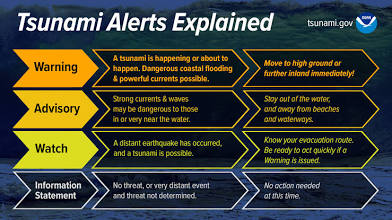
Tsunami Preparedness: Is Your Emergency Kit Ready?
A tsunami is a series of powerful ocean waves caused by sudden disturbances such as underwater earthquakes, volcanic eruptions, or landslides. These waves can travel at speeds up to 500 miles per hour in deep water, growing in height as they approach the shore, leading to devastating coastal impacts. (Ocean Today, Encyclopedia Britannica)
Recent studies have highlighted the potential threat of a "mega tsunami" to parts of the U.S., particularly Alaska, Hawaii, and the West Coast. The Cascadia subduction zone, stretching from Northern Vancouver Island to Northern California, has a 15% chance of producing a magnitude 8.0 or greater earthquake in the next 50 years. Such an event could trigger massive tsunamis, with coastal areas like Northern California, Oregon, and Washington being most at risk. (New York Post)
Given these risks, having a well-prepared emergency kit is crucial. An effective tsunami emergency kit should include:(Merriam-Webster)
-
Water: One gallon per person per day for at least three days.
-
Non-perishable food: A three-day supply.
-
Battery-powered or hand-crank radio: Preferably with NOAA Weather Radio capabilities.
-
Flashlight: With extra batteries.
-
First aid kit: Including necessary medications.
-
Whistle: To signal for help.
-
Dust mask: To help filter contaminated air.
-
Plastic sheeting and duct tape: For sheltering in place.
-
Moist towelettes, garbage bags, and plastic ties: For personal sanitation.
-
Wrench or pliers: To turn off utilities.
-
Manual can opener: For food.
-
Local maps: For navigation.
-
Cell phone with chargers and backup battery.(Wikipedia, Weather.gov, Ready.gov)
Being prepared can make a significant difference in the aftermath of a tsunami. Ensure your emergency kit is up-to-date and tailored to your family's needs. For more detailed information on building an emergency kit, visit Ready.gov.(Ready.gov)